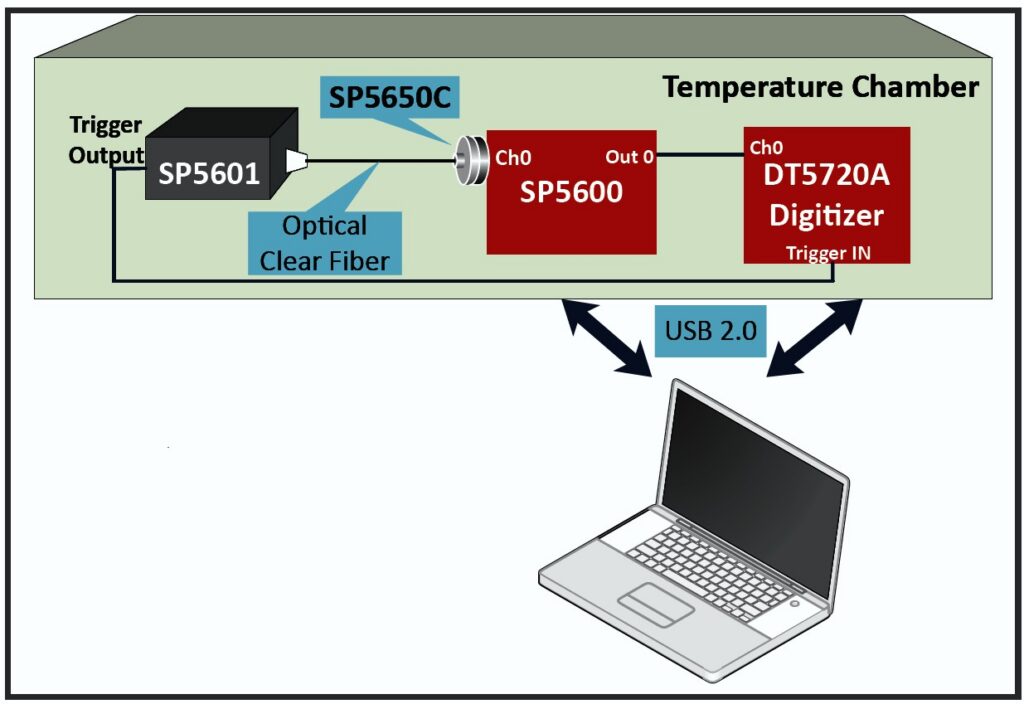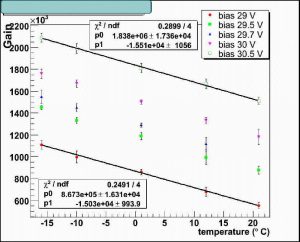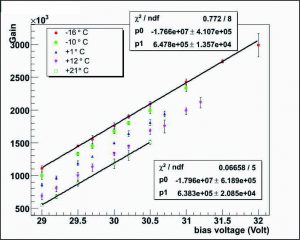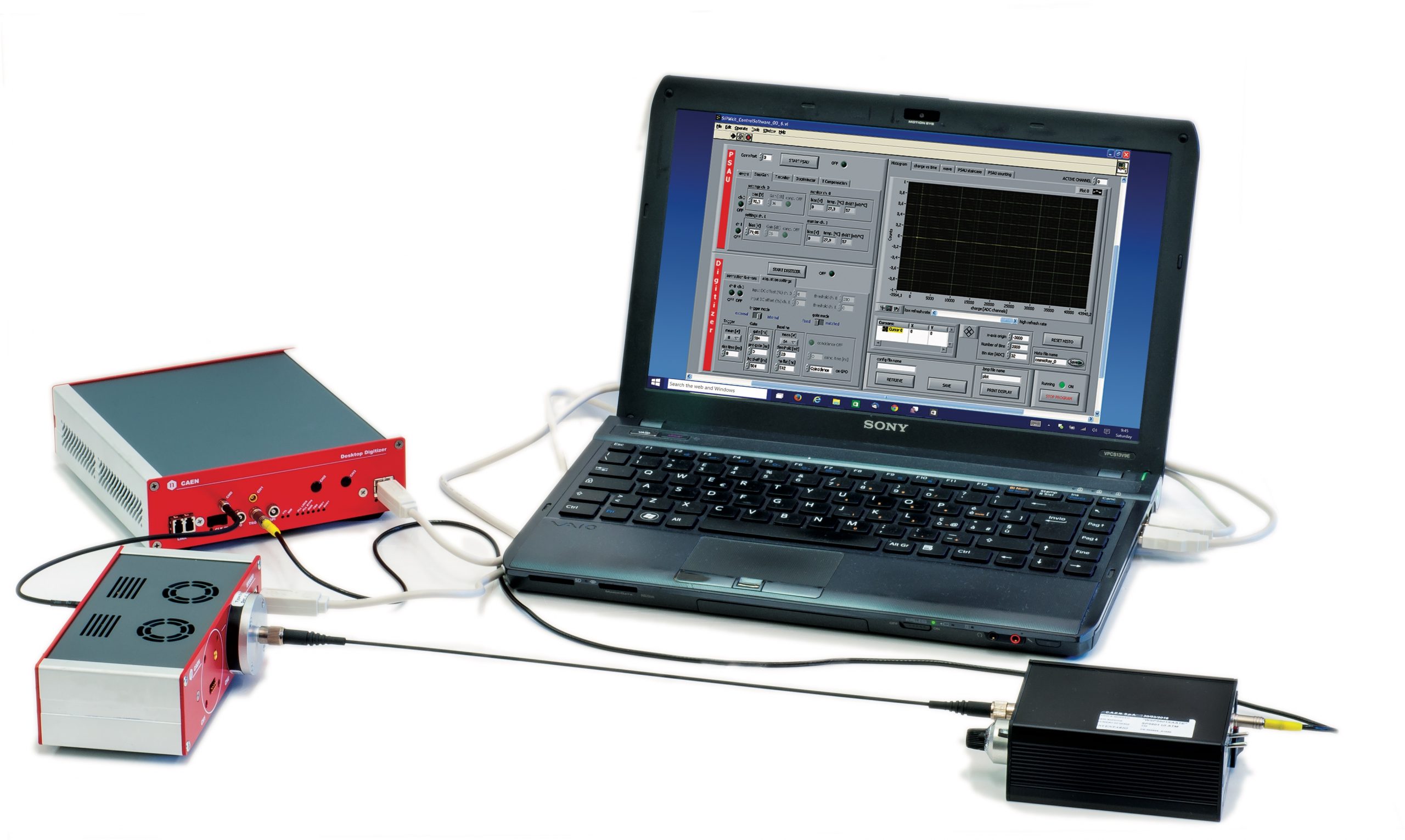| Difficult | Execution Time | Data Analysis | Radioactive Sources |
|---|---|---|---|
| Yes | No |
Hardware setup
This experiment guide is referred to the SP5600E educational kit.
Equipment: SP5600 – Educational Photon Kit
| Model | SP5600 | DT5720A | SP5601 | SP5650C |
|---|---|---|---|---|
| Description | Power Supply and Application Unit | Desktop Digitizer 250 MS/s |
LED Driver | Sensor Holder for SP5600 with SiPM |
Purpose of the experiment
Gain, noise and photon detection efficiency (at fixed bias voltage) are affected by temperature. The student is driven through the measurement of the dependence of these critical figures.
Fundamentals
The gain in a SiPM biased at fixed voltage changes with temperature since the breakdown voltage Vbr does it. Gain stabilization is a must and can be pursued tracking the Vbr changes and adjusting the bias voltage accordingly. The rate of variation depends on the sensor, through the material properties. Noise depends on the thermal generation of charge carriers, so a significant dependence is expected as well.
Carrying out the experiment

Experimental setup block diagram
In a temperature controlled box, mount one of the sensors (SP5650C) on the SP5600 and connect the analog output to the input of the DT5720A digitizer. Optically couple the LED and the sensor via the optical fiber, after having used the index matching grease on the tips. Set the internal trigger mode on the SP5601 and connect its trigger output on the DT5720A trigger IN. Connect via USB the modules to the PC and power ON the devices. Through the LabView graphical user interface (GUI), properly synchronize the signal integration and, for every temperature & voltage value, record the photon spectrum and measure directly the Dark Count and the Optical Cross talk.
Results
Figures show the dependence of the gain upon temperature at various voltages and the voltage dependence at various temperatures. By the two set of results, the temperature coefficient of the sensor, i.e. the variation of the breakdown voltage with temperature, can be measured.

SiPM gain as a function of temperature, at different bias voltage values

SiPM gain as a function of the bias voltage, at different temperature values


